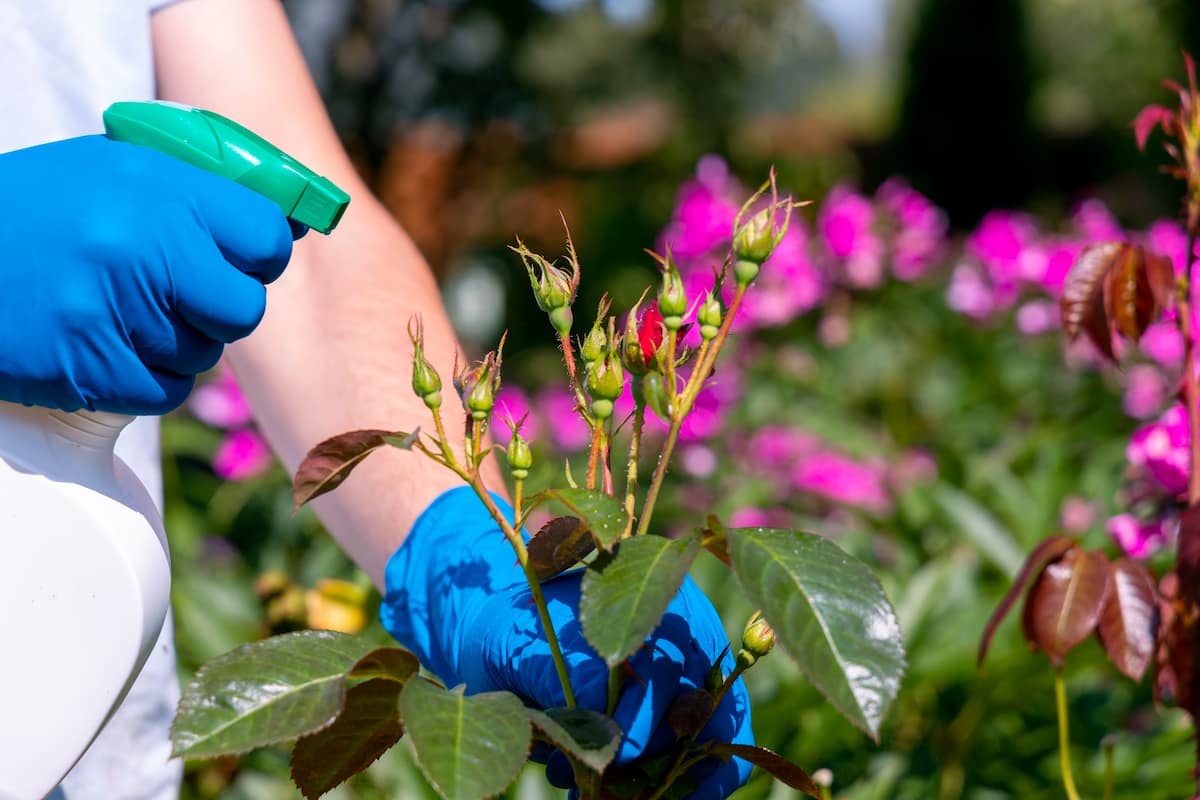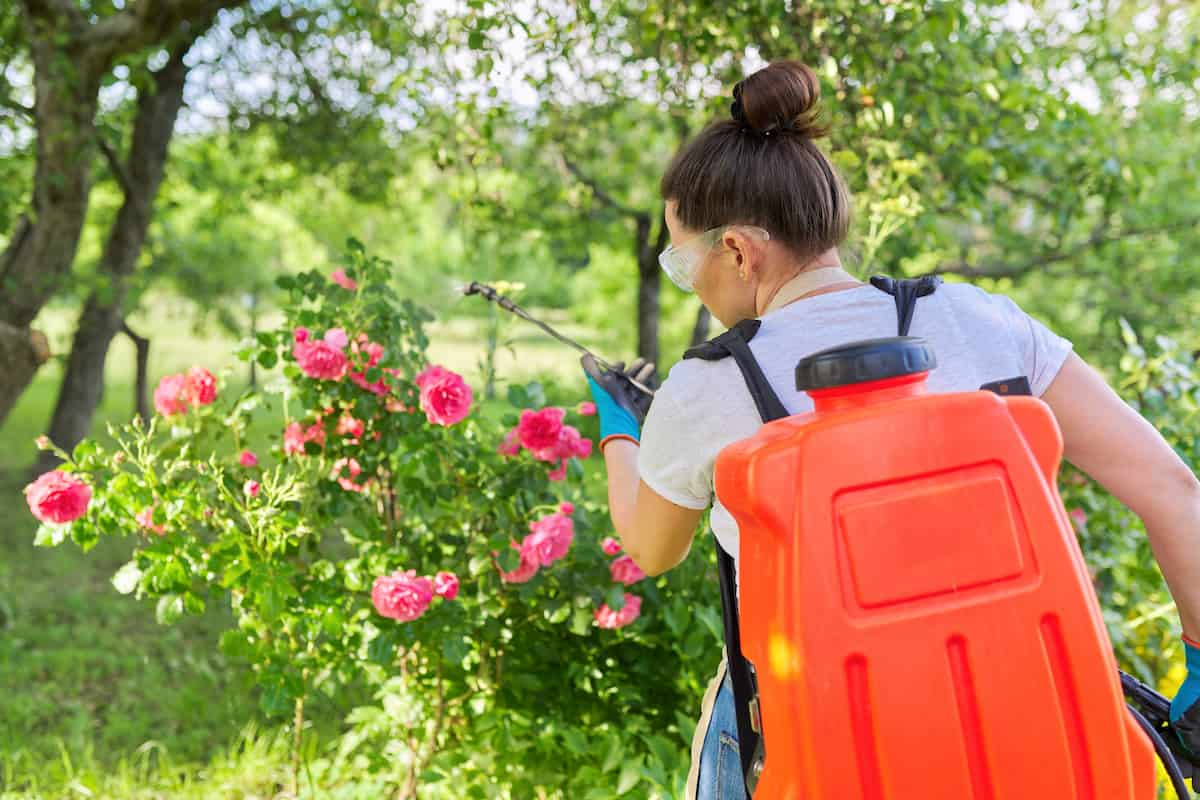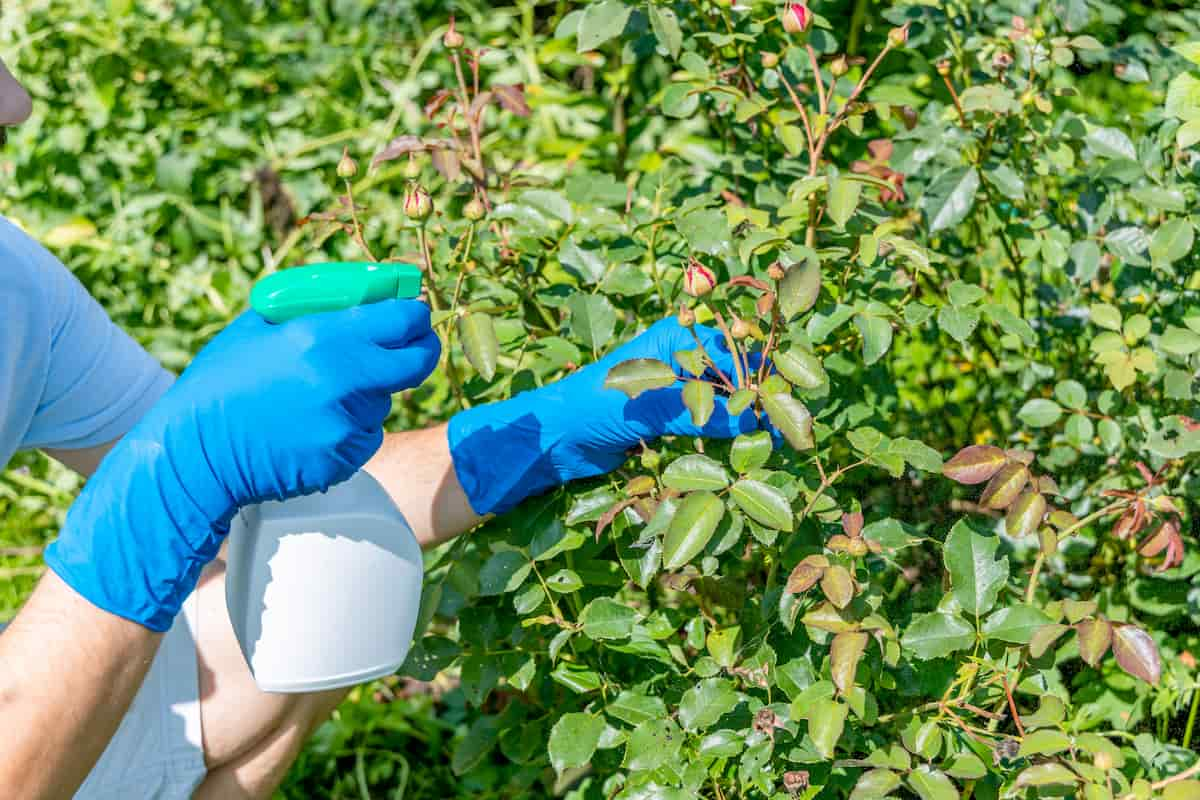The Rose Red Scale, Lindingaspis rossi, belonging to the Family Coccidae of the Order Hemiptera, is a notorious pest that inflicts significant yield losses and reduces the quality of crops worldwide. It is known to be a voracious feeder. The pest derives its name from the reddish-pink color of the adult females commonly found on rose plants’ stems and leaves. This pest is native to South Africa.

Effective management strategies are essential to minimize the impact of this pest on Rose production. To effectively manage this pest, it is necessary to understand its life cycle, its preferred habitats, and the best methods for controlling it. This article will provide an overview and discussion of the Rose Red Scale Pest in Rose crops, including its symptoms, identification techniques, and control.
Rose Red Scale Pest Management
Life Cycle of Rose Red Scale Pest in Rose Crop
The life cycle of the Rose Red Scale pest has four stages. They are egg, crawler, nymph, and adult. The lifecycle of the rose red scale begins when the female adult lays eggs on the leaves or stems of the rose plant. The eggs then hatch into tiny, mobile larvae called crawlers. The crawlers are the most vulnerable stage of the pest’s lifecycle and are responsible for spreading the infestation.
The crawlers move around the plant using their legs and a secretion of wax that enables them to stick to the surface. They are also very susceptible to desiccation and require a moist environment. After settling on a suitable spot, the crawlers secrete a protective scale covering that appears pink to reddish-brown. Under this scale, the crawlers feed on the plant’s sap and molt, shedding their exoskeleton and developing into nymphs.
Nymphs are also covered with a protective scale and feed on the plant’s sap and molt several times. Each molt produces a larger nymph with a progressively more elongated and convex body shape. After several molts, the nymphs develop into adult females, which is the most distinctive stage of the pest.
Adult females are immobile and do not feed, but they spend their entire lives on the plant, laying eggs and producing a waxy coating that shields them from predators and environmental stressors. The adult females lay their eggs underneath their scale covering, which hatch into crawlers, restarting the lifecycle. The Rose Red Scale Pest lifecycle can take 1 to 2 months, depending on the temperature, humidity, and other environmental factors.
Occurrence of Rose Red Scale Pest in Rose Crop
- Location of Rose Red Scale Pest: This pest infests Rose crops in India, Africa, Sri Lanka, China, Thailand, Vietnam, Indonesia, the United States, Mexico, Brazil, Colombia, Ecuador, the Philippines, and Australia.
- Host Range: The Rose Red Scale pest infects crops like Roses, Azaleas, Camellias, Hibiscus, Tomatoes, Peppers, Eggplants, Citrus, Grapes, Pears, Apples, and Peaches.
Factors Favoring the Population Increase of Rose Red Scale Pest in Rose Crop
- Temperature – The pest thrives in warm temperatures ranging from 20°C to 30°C, increasing its reproductive rate and leading to larger populations.
- Humidity – The pest prefers humid environments, as it helps to complete its lifecycle faster.
- Nutrient Deficiency – Nutrient-deficient plants are more susceptible to pest infestation as they have reduced vigor.
- Lack of Predators – The pest can thrive without natural predators that would otherwise help control its populations.
- Lack of Proper Sanitation – Poor sanitation practices in rose crops, such as leaving dead plant material or debris in the field, can provide breeding grounds for the pest.
- Overcrowding of Plants – Overcrowding plants can help the pest easily move from one plant to another, increasing the chances of infestation.
In case you missed it: Botrytis Blight Management in Rose: Disease Symptoms, Treatment, Cultural, Chemical and Biological Control

Identification of Rose Red Scale Pest in Rose Crop
- Egg: The eggs are small, oval-shaped, and typically yellow or orange.
- Crawler: They are extremely small, measuring less than 0.5 mm long, and pale yellow.
- Nymph: Nymphs are larger than crawlers and have a more oval-shaped body.
- Adult: Adult females are about 2-3 mm long, wingless, and have a reddish-pink scale covering.
Damage Symptoms of Rose Red Scale Pest in Rose Crop
- The characteristic symptom of this pest is the reddish-brown scales completely covering the lower portion of the old stems and younger shoots.
- The tiny patches on the plant parts resemble pox spots and show a pox-like appearance.
- The pest is a sap-sucking insect that feeds on the plant’s phloem, reducing vigor and stunting growth.
- The infested plants become deformed, dry, wilt, and wither completely. In severe cases, the entire plant dies.
Percentage of Yield Loss in Roses Due to Rose Red Scale Pest
- In India, the yield losses due to Rose Red Scale pests are 30-40%. In Thailand, the percentage of yield loss is 30%. In Vietnam, the losses are 40%. In Sri Lanka, the losses are 40%. In Indonesia, the losses are 50%. In Africa, it is 50%. In the United States, it is 30%. In Mexico, it is 20-30%. In Brazil, it is 50%. In China, it is 50%.
- In Colombia, the losses are 30%. In Ecuador, it is 40%. In Australia, it is 10%. In the Philippines, the yield losses are 50%. The Economic Threshold Level (ETL) for the Rose Red Scale pest is set at 4-5 scales per leaf.
Cultural Control of Rose Red Scale Pest in Rose Crop
- Hand Removal – Rub the pinkish-red scales of the plant using cotton dipped in kerosene or diesel.
- Sanitation – Remove and destroy any infested plant debris, prune and burn the infested branches, and regularly clean tools and equipment used in the field.
- Site Selection – Choose a site with good air circulation, adequate sunlight, and well-draining soil that can create a less favorable environment for the pest.
- Irrigation & Fertilization – Proper irrigation and fertilization can help to maintain healthy, vigorous plants that are more resistant to pest infestations.
- Pruning Time – Pruning should be done during the dormant season or when the plant is not actively growing to avoid spreading infestations.
- Crop Rotation – Rotating crops can help reduce the build-up of pest populations in the soil and plant debris.
Biological Control of Rose Red Scale Pest in Rose Crop
- Predatory Insects – Predatory insects, including lady beetles, lacewings, and predatory mites, feed on the pest and reduce their populations.
- Parasitic Wasps – Parasitic wasps, such as Aphytis sp., Encarsia sp., and Metaphycus sp., lay their eggs inside the pest’s scales, and the developing larvae feed on the pest, eventually killing it.
- Entomopathogenic Fungi – Entomopathogenic fungi, such as Beauveria bassiana and Lecanicillium lecanii, infect and kill the pest.
- Entomopathogenic Nematodes – Entomopathogenic nematodes, such as Steinernema feltiae and Heterorhabditis bacteriophora, infect and kill pest larvae in the soil.
Chemical Control of Rose Red Scale Pest in Rose Crop
- Spray insecticides on the crops like Malathion, Endosulfan, Carbofuran, Imidacloprid, Dimethoate, and Methyl Demeton, on the foliage to control the pest.
- Acaricides – Spray abamectin, spiromesifen, and fenpyroximate to control the insect pest.
Organic Control of Rose Red Scale Pest in Rose Crop
- Mineral-based insecticides such as diatomaceous earth and kaolin clay can control pests by physically disrupting the pest’s cuticle and causing dehydration.
- Spinosad produced by the soil bacterium Saccharopolyspora spinosa should be sprayed on the leaves and stems of the plants to control the pest.
- Spray fish oil resin soap to control the pest in the crop field.
- Plant extracts from neem, garlic, cinnamon, ginger, turmeric, hot pepper, and Rose can be applied to manage the infestation.
- Clove oil, Peppermint oil, and Eucalyptus oil disrupt the pest’s hormonal balance and inhibit its feeding and reproductive abilities.
Preventive Measures for Control of Rose Red Scale Pest in Rose Crop
- Monitoring – Monitor the crops regularly to identify pest infestation in the early stages to keep it under control.
- Sticky Traps – Use yellow sticky traps to monitor the pest’s activity and determine the control measures.
- Resistant Varieties – Planting healthy, resistant, or tolerant varieties can prevent pest incidence.
In case you missed it: Downy Mildew Management in Rose: Symptoms, Disease Cycle, Treatment, Chemical, and Biological Control

Conclusion
The Rose Red Scale Pest, Lindingaspis rossi, is a major pest that affects Rose crops worldwide, causing significant yield losses. By implementing IPM strategies, growers can effectively manage pest populations while minimizing the risks associated with chemical control. This can help to ensure sustainable production and maintain the long-term viability of the rose industry.
- Natural Solutions for Pest Control in Flower Gardens
- Types of Fungicides Used in Agriculture
- Common Issues in the Fruit Development Stage of Pomegranate Farming
- Fruit Development Issues in Papaya: Easy Solutions and Treatment
- Soil-Borne Diseases and How to Protect Your Plants
- Practices to Prevent Disease Spread in the Garden
- From Wilted to Thriving: How to Treat Root Rot Naturally in Houseplants
- Natural Remedies to Cure Brown Spots on Fig Tree Leaves
- Natural Solutions for Poinsettia Problems: 100% Effective Remedies